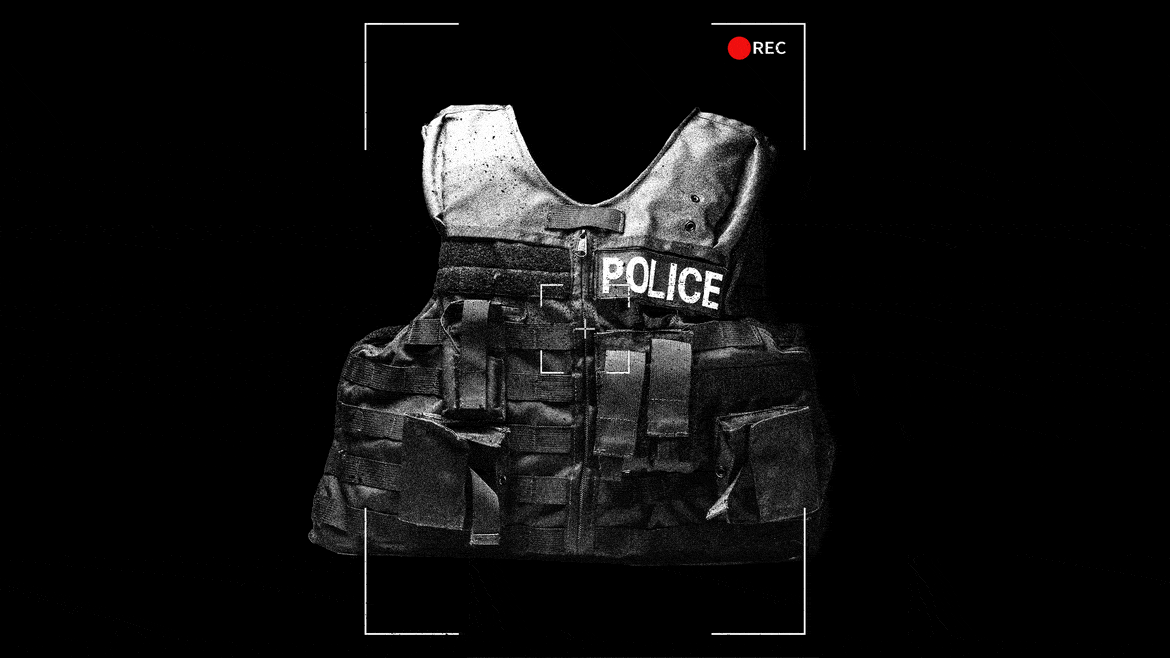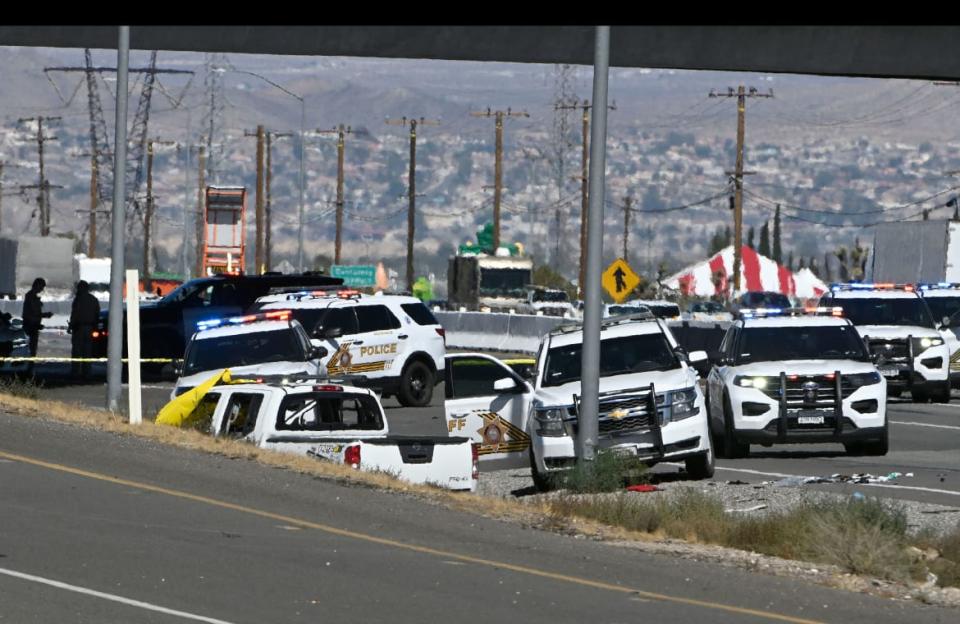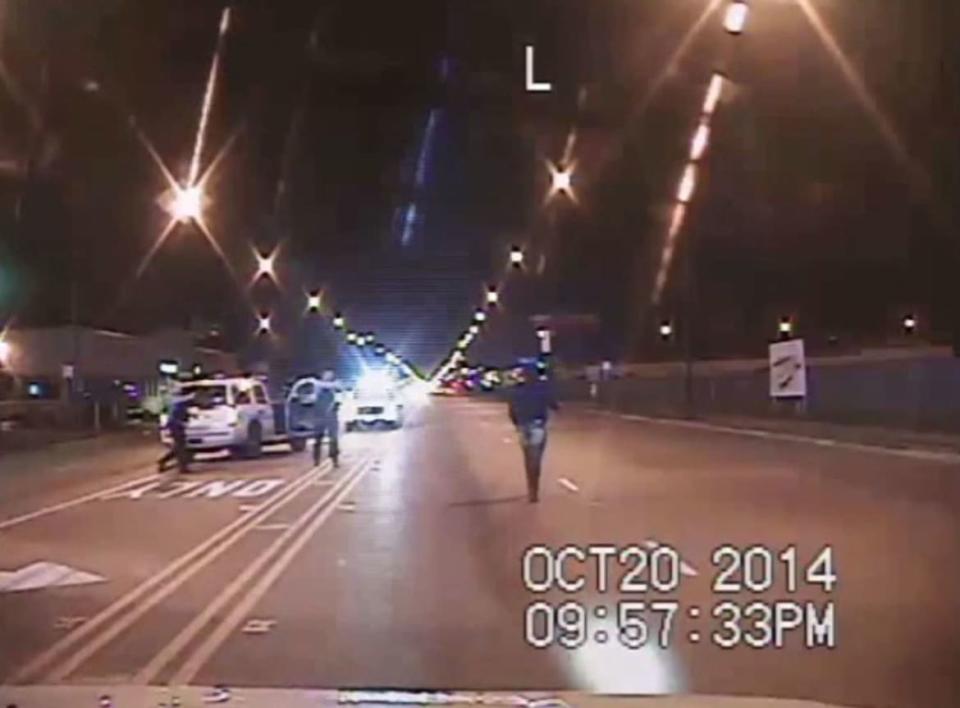A Kidnapped Teen Shot by Police on Video Shows How Cops Still Fight Transparency and Accountability

- Oops!Something went wrong.Please try again later.
It took nearly two years for the San Bernardino County Sheriff's Department to release audio and video footage of their killing of Savannah Graziano, a 15-year-old girl who had been kidnapped by her father. The police initially claimed that Graziano may have been shooting at police, or even that she may have been shot by her father.
But the footage makes clear that she was shot as she was crawling toward the police, to get away from her father, and that she was following police instructions. As she exited the vehicle, audio depicts an officer telling his colleagues, “Girl is out, the girl is out, guys. She’s out on the passenger side.” An officer then instructs her, “Come to me! Come, come, come…walk, walk, walk.”
Then, gunfire from police officers. The officer talking to Graziano then shouts “Hey! Stop! Stop shooting her! He’s in the car!”
New Video Shows Unarmed, Kidnapped Girl Being Gunned Down by Police
It was, admittedly, a fraught and tense situation. Graziano’s father had led police on a chase, during which he repeatedly fired a gun at them. But whatever sympathy one might have for the deputies becomes hard to sustain given that the department pushed a narrative about the incident that implicated a teen girl caught in an impossible predicament, and for which they had audio and video evidence that clearly contradicted what they were telling the public.
The San Bernardino County Sheriff’s Department only adopted body cameras last year. They were the last police agency in the county to do so. The Graziano incident happened in 2022, so the footage was mostly audio, dashboard cameras, and helicopter footage. But the way the department handled the incident suggests that, as with other jurisdictions, the introduction of body cameras won’t be the transparency and accountability panacea they're often touted to be.

Law enforcement vehicles surrounded the vehicle driven by Anthony John Graziano, following a gun battle on Sept. 27, 2022.
Any new piece of law enforcement technology is only as good as the policies that govern its use. Tasers, for example, were initially touted as a substitute for lethal force. They quickly became a compliance tool, instead.
Body cameras grew popular in the late 2000s after an ever-growing number of incidents in which cell phone footage shot by bystanders clearly contradicted police accounts. Body cams were supposed to provide a non-corruptible, unbiased account of police interactions with the public. But to achieve that promise, police departments, city officials, and state legislators needed to enact policies to ensure the new technology served the interests of the public, and wouldn’t be abused.
That isn’t what happened. Instead, we got a patchwork set of laws and policies around the country that largely reflect how those jurisdictions and departments approached policing prior to the implementation of body cameras. In places where police operate with little oversight and accountability, we got policies that largely entrust camera footage to the police themselves. Only in the handful of jurisdictions with a more skeptical, progressive approach to policing did we get promoting more transparency.
This polarization of policing policy continued after the death of George Floyd. Progressive cities and states passed policies to make body cam footage more transparent and available. Conservative state legislatures, meanwhile, put the decision on whether or not to release footage squarely within the purview of police departments.
Some prevented civilian review boards from accessing footage without authorization from law enforcement officials. Others allowed police to review footage before being interviewed or writing reports about controversial incidents, a policy that lets them craft exonerative narratives without fear of being contradicted by video.
Legislators in Indiana, Arizona, Nebraska, Louisiana, Texas, and Florida introduced or passed laws restricting the ability of citizens to record on-duty officers with their cell phones. Such laws would likely have criminalized the footage of Floyd’s death that forced public officials to investigate the initial police account of Floyd’s death, and eventually sparked international outrage and protest. And that, of course, is the point.
Ron DeSantis Wants You to Be Scared Senseless About Crime (Don’t Be)
After the high-profile police killing of Walter Scott, South Carolina passed a bill requiring police agencies in the state to implement body cameras. But the bill severely limited public access to footage from those cameras. As I’ve personally reported over the years, this is a state badly in need of police transparency and oversight. North Carolina has a similar law, giving police agencies enormous discretion over when, how, and how much video footage to release, even to the families of people killed by police officers.
A New York Times/ProPublica investigation published in December 2023 looked at the 79 deaths in police custody in the month of June 2022, for which there should have been body camera footage. Police had released the footage in under half of those cases.
Any law or policy that lets police departments release body cam footage that vindicates officers (and such footage does often vindicate them), but also lets them prevent the public and oversight boards from accessing footage that implicates them is the opposite of transparency. It’s worse than having no body cameras at all. And it only further undermines public trust in the police—a problem body cameras were supposed to improve.
It isn’t as if legislators couldn’t have known this would be an issue. Prior to body cams there were dashboard and security cameras. And there is a long and sordid history of officers conveniently failing to turn on their dash cams during use of force incidents and questionable traffic stops, dash cams coincidentally malfunctioning at critical moments, and possibly damning footage somehow getting edited—orlost or destroyed.
One civil rights lawyer told me that in Little Rock, Arkansas, for example, police officers would routinely fail to activate their dash cams or body mics during an altercation. When the suspect would later report abuse of force, the officer might get a slap on the wrist for failing to activate the devices, but the more serious complaint would be dismissed for lack of evidence.
After the police murder of Laquan McDonald in 2014, Chicago police suppressed dash cam and surveillance footage for more than a year. A subsequent audit found that Chicago police routinely sabotaged their dash cameras and body mics.

In this still image taken from a police vehicle dash camera released by the Chicago Police Department, Laquan McDonald walks up a street just prior to being shot by Chicago Police officer Jason Van Dyke on October 20, 2014 in Chicago, Illinois.
After a 2018 incident of alleged excessive force in Albuquerque, all five officers involved claimed their body cameras had simultaneously malfunctioned. The same after a 2014 incident in Utah—two dash cameras and three lapel cameras somehow all stopped working at the same time.
The all-time record, as far as I know, was a 2007 incident in Maryland, in which a reporter and cameraman doing a story on police abuse claimed they were pulled over and roughed up by cops in Prince George’s County. The department would later claim that all seven dash cameras at the scene coincidentally malfunctioned.
The ideal body camera policy would allow civilian oversight boards to access body camera footage immediately after an incident. It would also make footage available to the public immediately after giving police a reasonable period to review it and make redactions to protect ongoing investigations, or to protect the privacy of witnesses and bystanders. It would punish police officers who disable or fail to activate their cameras with sufficient punitiveness to compel compliance.
In lawsuits or criminal cases for which there should be police camera footage but isn’t, an ideal policy would instruct juries to make a “favorable inference” that such evidence would have been positive for the party opposing the police. Such a policy would also instruct police agencies to regularly review footage, not just for infractions by police officers, but to identify areas where officers could use more training and guidance. It would require officers involved in shootings, improper use of force, or accused of misconduct to first write a report without reviewing the footage, then allow them to view it, and then require them to write a report explaining any discrepancies.
These shouldn’t be controversial policies. Well-intentioned cops can only be helped by them.
Unfortunately, the most critical component of any sensible body camera policy is also clearly lacking among too many policymakers and legislators—the courage to ensure that the people we arm and entrust with the power to kill are governed with careful oversight, ample transparency, and appropriate consequences when they violate that trust.
Get the Daily Beast's biggest scoops and scandals delivered right to your inbox. Sign up now.
Stay informed and gain unlimited access to the Daily Beast's unmatched reporting. Subscribe now.

